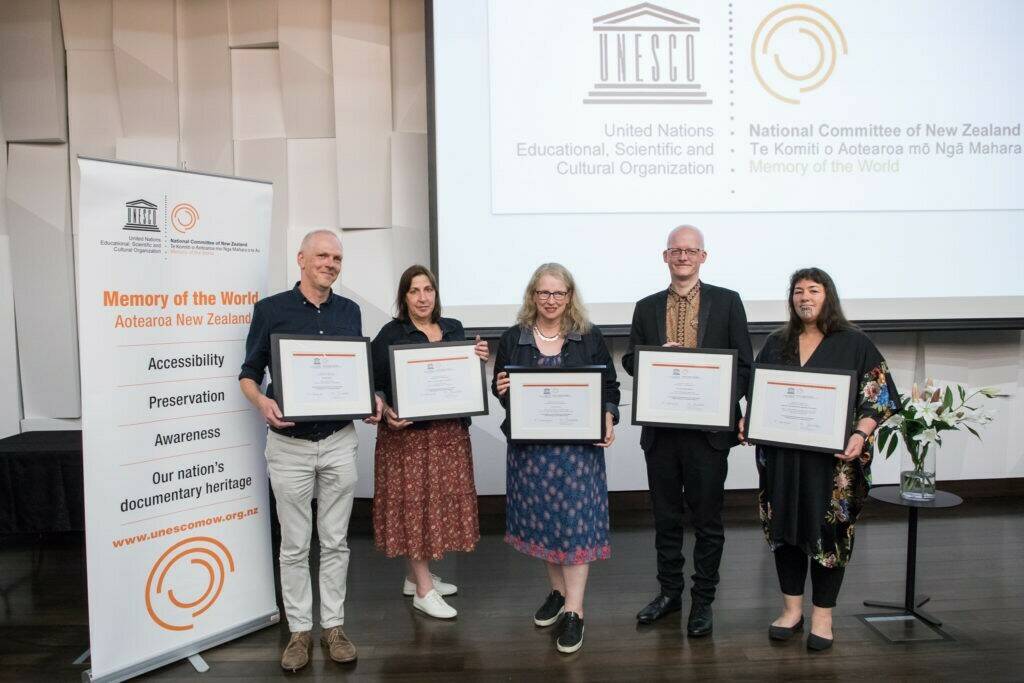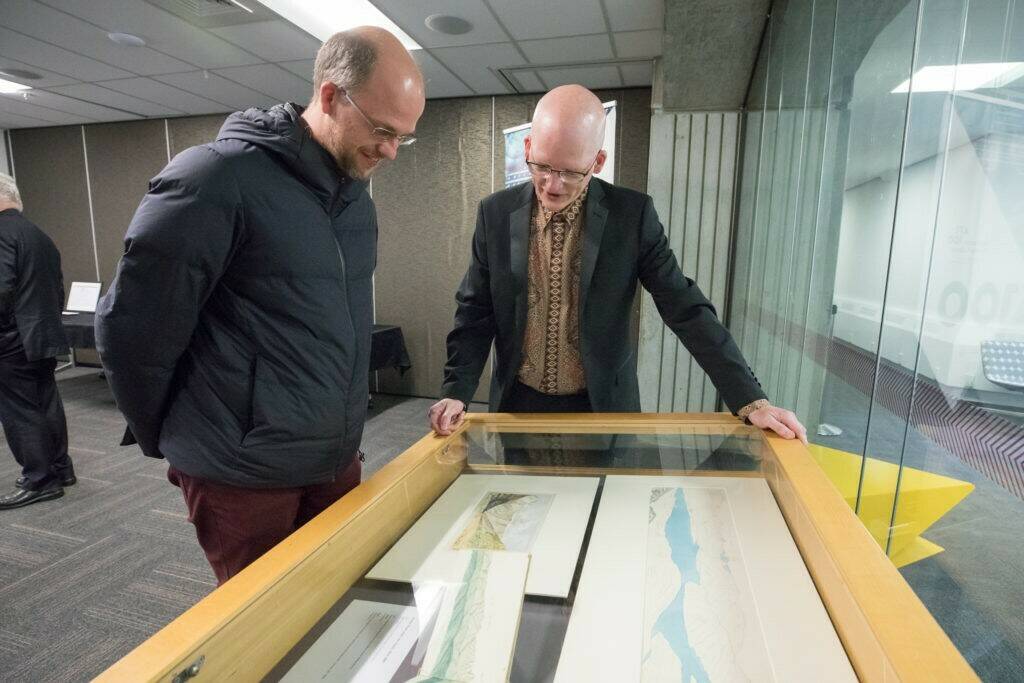New inscriptions to the New Zealand Memory of the World register for 2020
On Monday the 17th of February 2020 the newest inscriptions to the UNESCO Memory of the World New Zealand Register were made at a ceremony at the National Library of New Zealand.
Celebrating the taonga
Precious documentary heritage is added yearly to the register in recognition of its significance to New Zealand history.
To celebrate the taonga inscribed on the UNESCO Memory of the World New Zealand Register, representatives from Auckland Public Library, Ngā Taonga Sound & Vision, Hocken Collections, and the Alexander Turnbull Library spoke about the items from these collections, why they were selected and why they are important to the history of New Zealand.
National Commission Chair Robyn Baker spoke and acknowledged the five new inscriptions covering radio recordings from the Second World War, early climate records, life documented in 1800s Hokianga through glass plate negatives, the public health research of Muriel Bell, and Sir Julius von Haast’s science correspondence.

2019 Successful Nominations
C P Dawes Collection
Auckland Libraries
The C P Dawes Collection (Charlie Dawes) is an extensive photographic record of the Hokianga in the last decades of the 19th century and first decades of the 20th. It is comprised of 3 separate accessions of glass plate negatives totalling almost 2200 items, and around 100 original prints. Additionally, Auckland Libraries holds the photographer’s camera.
Richard Davis Meteorological Records 1839-1851
Auckland Libraries
Two autograph folio manuscript notebooks with cardboard covers in the hand of Rev. Richard Davis, recording meteorological data he collected in Waimate North and Kaikohe in the Bay of Islands in two periods over a total of nine years, from 1839 to 1844 and from 1849 to 1851. (The first volume NZMS 378 covers records for the 1839-44 period and from Jan to March 1849; the second volume NZMS 14 picks up from April 1849 to 1851). Journals record instrumental measurements of temperature and barometric pressure, plus descriptions of cloud cover, wind speed and direction and description of weather events.
World War II New Zealand Mobile Broadcasting Unit Recordings
Nga Taonga Sound & Vision
There are 1,592 acetate (lacquer) sound recording discs in this collection: 1472 recorded in North Africa, the Middle East and Italy, in the so-called “U-Series” (August 1940 – December 1945), and 120 recorded during the war in the Pacific, called the “P-Series” (April 1943 – August 1944).
Dr Muriel Bell Papers
Hocken Collections
These papers document the work of Dr Muriel Bell, a brilliant and energetic early woman medical researcher whose life-long interest in many aspects of research on nutrition led her to make many significant contributions to improve the health of New Zealanders today.
There is particular emphasis on research on the nutritional aspects of vitamins, milk, fish oils, diabetes, cholesterol and fatty acids. Other areas of research are nutrition in the Pacific, the nutritional requirements of the NZ Trans-Antarctic Expedition 1956-57, vitamin D, dental health, coronary heart disease and healthy diet.
Sir Julius von Haast Collection
Alexander Turnbull Library
Sir Julius von Haast, German-born New Zealand explorer, geologist, and founder of Canterbury Museum – The collection comprises correspondence, manuscripts, documents, certificates, and printed matter, including newspaper cuttings, photographs, drawings and sketches, maps, and curios. The papers are arranged in series of ‘Official papers and correspondence’, ‘Personal correspondence’, ‘Manuscripts’, and ‘Printed material’.

UNESCO Aotearoa Youth Leader, Bella Simpson attended the event, “It was a wonderful opportunity to learn about the Register and hear about some incredible pieces of New Zealand’s history. I was inspired listening to Honiana Love from Nga Taonga talk about their submission of recordings from World War 2. These recordings were messages of love and support sent from different conflict zones to their families back home. Honiana talked about it sparking an emotional response because you’re listening to people’s voices. Afterwards I met a lady who told me how moved she was by the recordings because she got the chance to hear her father’s voice again.”
Images courtesy of the National Library and Mark Beatty.
